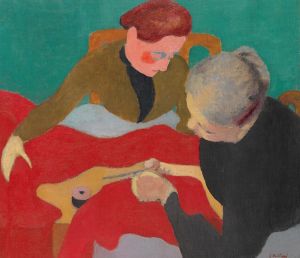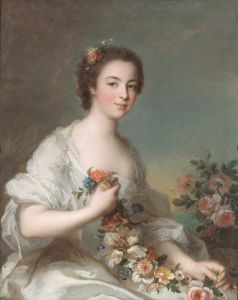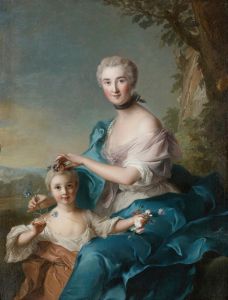
Portrait of a Woman
A hand-painted replica of Jean-Marc Nattier’s masterpiece Portrait of a Woman, meticulously crafted by professional artists to capture the true essence of the original. Each piece is created with museum-quality canvas and rare mineral pigments, carefully painted by experienced artists with delicate brushstrokes and rich, layered colors to perfectly recreate the texture of the original artwork. Unlike machine-printed reproductions, this hand-painted version brings the painting to life, infused with the artist’s emotions and skill in every stroke. Whether for personal collection or home decoration, it instantly elevates the artistic atmosphere of any space.
Jean-Marc Nattier's Portrait of a Woman is a painting created by the French Rococo artist Jean-Marc Nattier (1685–1766), who was renowned for his portraits of aristocratic women during the 18th century. Nattier's works are celebrated for their elegance, refined technique, and the idealized portrayal of his sitters, often incorporating allegorical or mythological elements.
The specific painting, Portrait of a Woman, is an example of Nattier's mastery in capturing the grace and sophistication of his subjects. The identity of the woman depicted in this portrait is not definitively known, as many of Nattier's works were commissioned by private patrons, and records of the sitters' identities were not always preserved. The painting showcases Nattier's characteristic style, with the sitter often portrayed in a luxurious setting, wearing elaborate clothing that reflects the fashion and opulence of the French aristocracy during the reign of Louis XV.
Nattier frequently employed a soft, delicate palette dominated by pastel tones, which is evident in this work. The sitter's pose and expression convey a sense of poise and serenity, typical of Nattier's approach to portraiture. The artist's attention to detail is apparent in the rendering of textures, such as the fabrics of the clothing and the sitter's skin, which are depicted with remarkable precision and subtlety.
While Nattier's portraits were highly sought after during his lifetime, his career faced challenges following the French Revolution, as the aristocracy's influence and patronage declined. Despite this, his works remain an important representation of Rococo art and the cultural milieu of 18th-century France.
The exact date of creation for Portrait of a Woman is not documented, but it likely falls within the height of Nattier's career, between the 1730s and 1750s. The painting is currently housed in a museum or private collection, though specific details about its provenance and current location may vary depending on the source.
As with many of Nattier's portraits, Portrait of a Woman exemplifies the artist's ability to combine realism with idealization, creating images that both flatter and immortalize his subjects. This painting continues to be appreciated for its artistic quality and its reflection of the tastes and aesthetics of 18th-century France.














